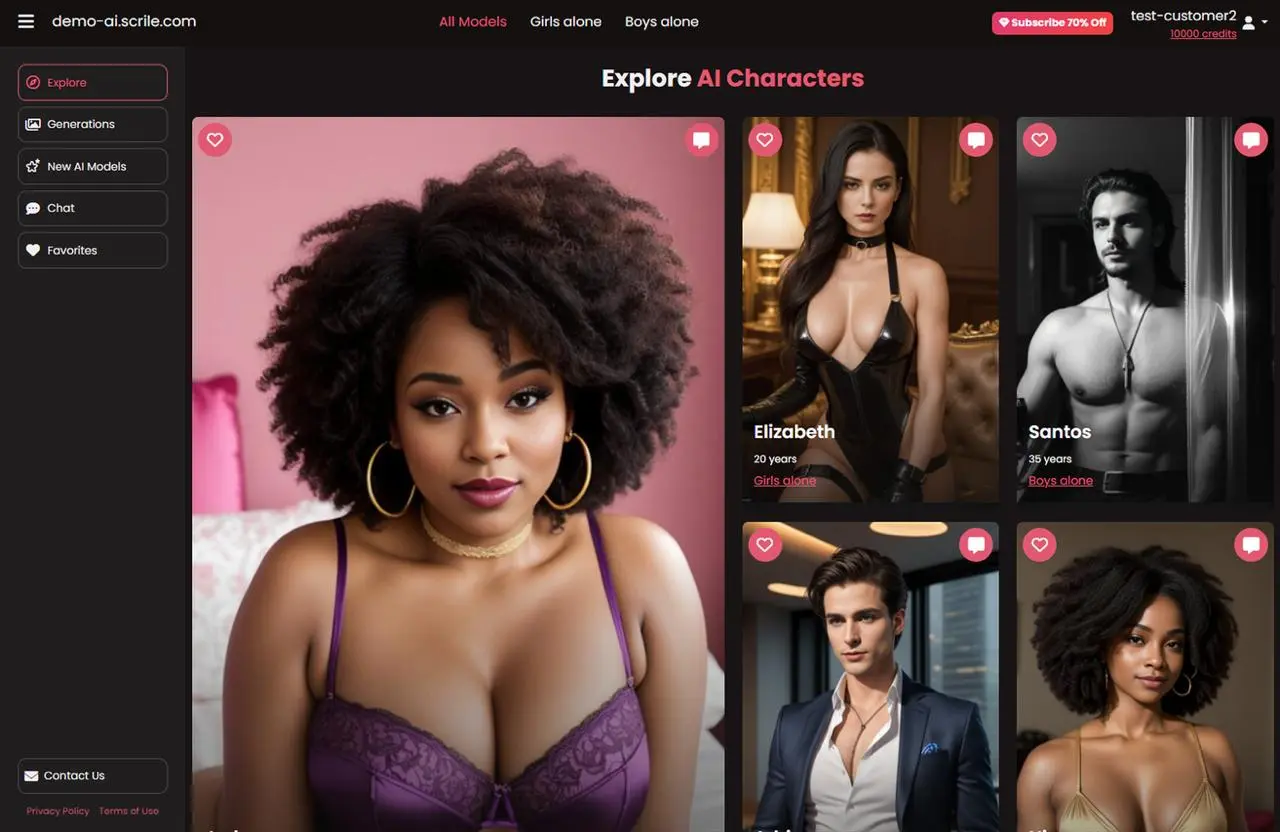How to Make an AI Influencer: 7 Key Steps
This guide will show you how to create an AI influencer, make engaging content, grow your audience, and monetize your unique AI persona. You will learn best practices, tools, and tips for creating, scheduling, and analyzing content so you can devote more of your time to productive work creating content.

how to make an AI influencer
What Is an AI Influencer?
If you’re wondering how to make an AI influencer, you are not the only one. A few years ago, the idea of virtual personalities taking over social media might have sounded like science fiction. But today it is an established concept. An AI influencer is, in its most basic form, a character created by a computer that interacts with real audiences on the internet, publishes content, and develops a following, just like a real influencer does. You have full control of their personality, appearance, and messages in a way that you would not with a human influencer.
Where Does This Trend Come From?
It all began with CGI models and animated characters on Instagram and YouTube. Digital influencers like Lil Miquela and Shudu showed brands and creators alike that a digital figure is equally as engaging as a human. Social media platforms quickly caught on. And now brands are exploring ways to create an AI influencer for marketing campaigns, product launches, or even personal branding.
So, what’s the deal with AI influencers? They’re fully programmable. You can decide their look, voice, and style, so you stand out among others trying to get noticed in a digital crowd. They also never age, get tired, or take a vacation, so your AI influencer can always post and keep the audience engaged any time of day.
To create an AI influencer, creators combine AI-generated content, 3D models, and content management. Generative AI is used to make realistic images and videos, and chatbots or AI models will help create the interaction with followers. The combination of technology allows the opportunity for content creators and marketers to take chances with a bolder, more creative approach. So, knowing how to make AI influencer is becoming a necessary skill set.
Tools and Technologies for Creating an AI Influencer
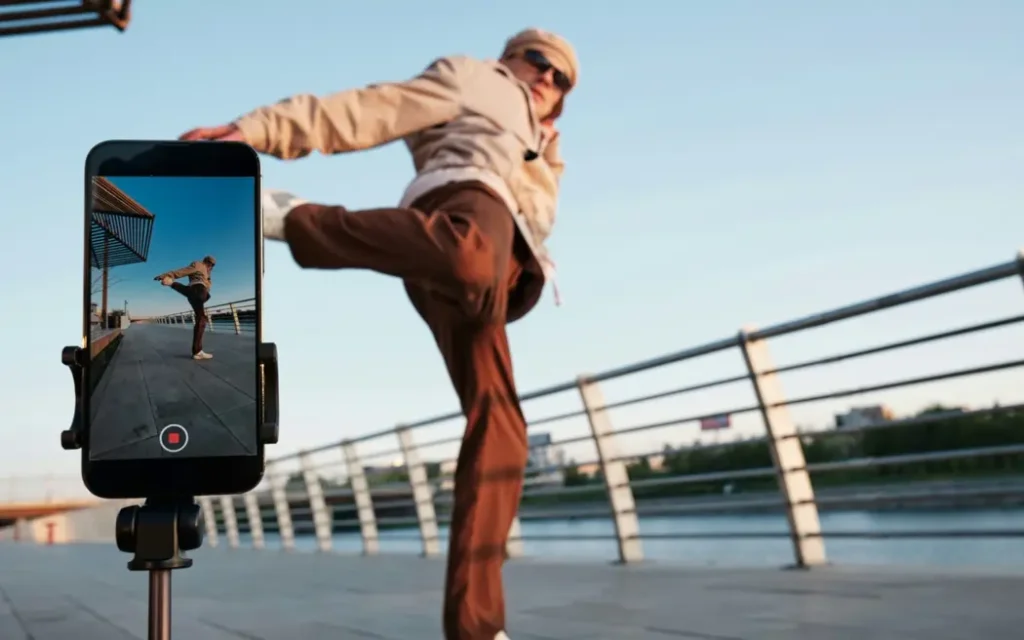
After you have learned how to make an AI influencer, it is time to learn what tools and technologies to use to create your virtual self. Making an AI influencer is not about making an avatar that looks nice; it is about the combination of visuals, personality, and interactivity to create a believable person online.
Visual Content
First, let’s start with visual content. There are many applications, such as DALL·E, MidJourney, and Stable Diffusion, that allow creators to create hyperrealistic photos and art from text prompts. If you need something more, from a 2D design perspective, there are also 3D modeling programs. All of these platforms will help you create a consistent aesthetic style.
Interaction
Next, you have to think about interaction. Creating an AI influencer is not just proposing a static image; your AI influencer needs to communicate with its followers. AI chatbot programs and natural language models such as ChatGPT can produce responses and individual conversational interactions. This is when you will begin to really create an AI influencer that feels alive and relatable.
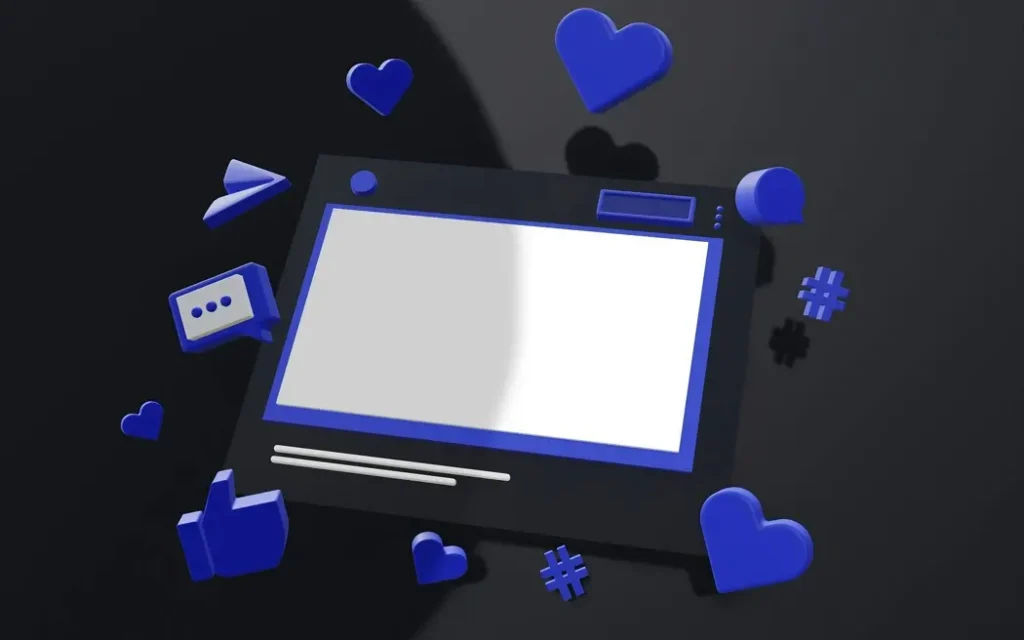
Media Posting and Management
When developing an AI influencer, you should also consider social media posting and management. Platforms like Buffer, Hootsuite, or Later help you schedule posts and enable an AI influencer to maintain a consistent cadence online and develop its content.
Analytics Tools
If you use a platform like Sprout Social or Iconosquare, you’ll get insight on follower growth, engagement, and posts. Based on the data and how audiences interact with your content, you can choose to adjust content or even the attributes of your persona.
Connections and Integration
You should also keep in mind connections and integration. It is critical to coordinate and ensure visuals are aligned with your influencer, chatbots, and analytics. It’s vital for your AI influencer to behave as a single unit and provide a more cohesive experience. However, for brands that want to engage and transcend the noise of social media, it takes consideration.
In conclusion, knowing how to create AI influencer is more than being a designer. You should put time and effort into learning how to prepare and use the best combination of tools for a custom AI persona.
Key 7 Steps: From Character Design to Social Media Presence
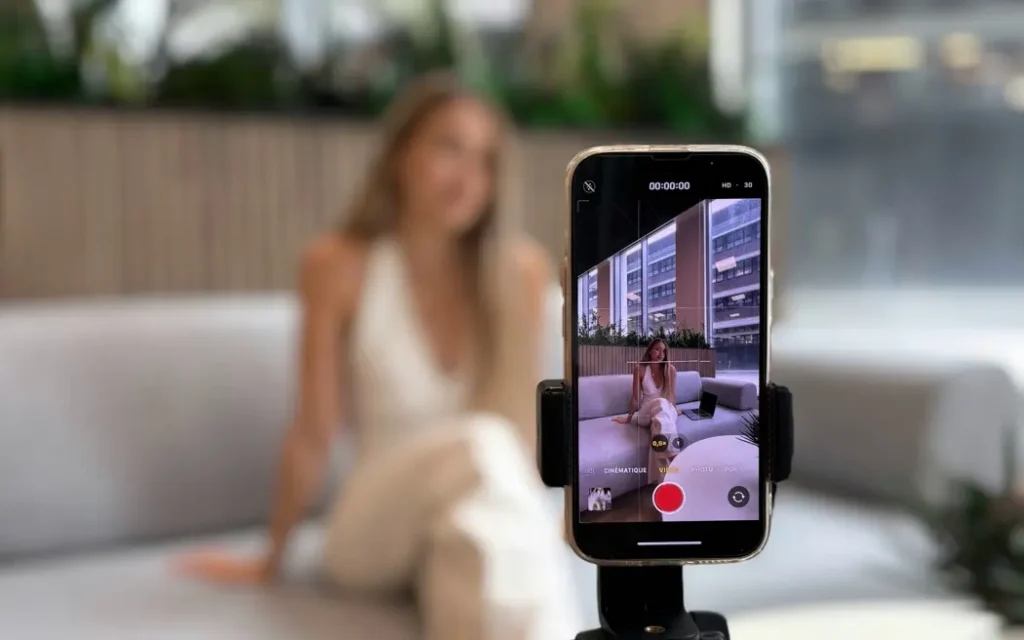
If you’re set on how to make an AI influencer, it may be beneficial to break the process down into distinct steps. Each step leads from defining your persona to launching them on social media. Let’s explore the 7 essential steps.
Step 1: Define Your AI Influencer Persona
Whose AI influencer is it going to be? What are the values, age, style, and humor of this AI influencer? An established persona helps the AI feel relatable and recognizable. Think of it like character development in a movie. The backstory and characteristics will dictate how your audience thinks about them.
Step 2: Design the Visual Identity
Next is appearance. Use AI-generated images or 3D models to create your influencer’s face, style, and the general aesthetic. Make sure all your posts feel consistent. Every post should utilize the same color palette, clothing style, and mood. Use tools like Stable Diffusion or Blender for high-quality designs that feel authentic and professional.
Step 3: Develop the AI Voice and Interaction Style
Your AI influencer must have a voice. Text-to-speech and AI chat models provide a unique conversational style. Consider whether your influencer’s voice is witty, inspirational, or casual, and use that style consistently across posts, comments, and messages. AI tools like ChatGPT help draft responses and test with small focus groups before posting.
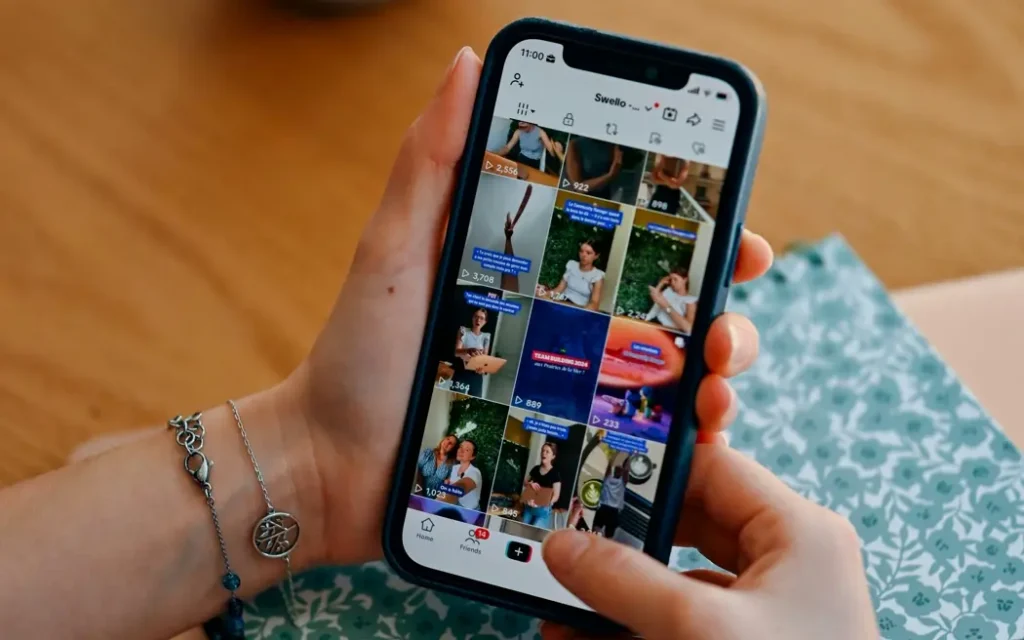
Step 4: Content Creation and Scheduling
Plan your posts ahead of time. Post pictures, videos, and stories to add a varied backdrop to each post. Then use automation tools like Hootsuite or Later to schedule posts at a regular time, so your AI influencer is consistent even if you are not online.
Step 5: Build Social Media Accounts
Select the appropriate platforms for your intended audience. Instagram is great for visual storytelling, TikTok is designed for short, fun videos, and YouTube is for longer, in-depth content. Make accounts that resonate with your brand identity, from your profile photos to your “bio.”
Step 6: Audience Engagement and Community Building
Interaction is where your AI influencer comes to life. Respond to comments, engage in conversations, and do polls or Q&As. AI will help here, but we need a human to keep the tone and messaging on point with the brand. Respond quickly here; people now expect online interactions in real time.
Step 7: Monitor Analytics and Optimize Strategy
Lastly, monitor performance. Analytics show what is working and what is not working. Engagement rates, follows, and interactions will help and give insight to change your content, posting times, and persona characteristics, and you will continuously improve your performance. Your AI influencer is like a living brand, and constant iteration will lead to better performance.
Monetizing a Virtual Influencer
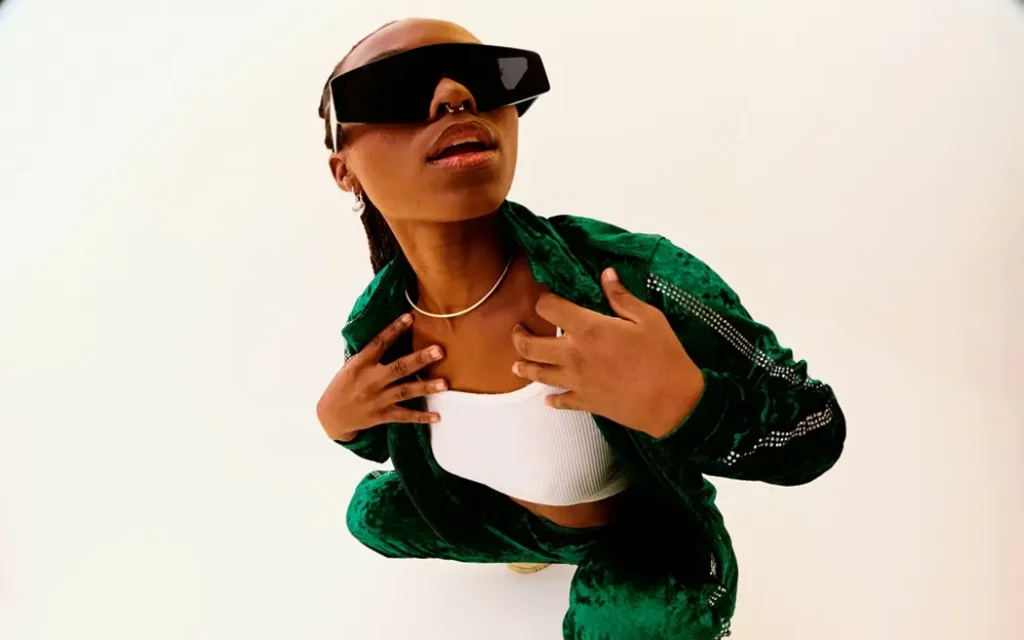
Now that you have learned how to make an AI influencer, the next question would obviously be, how is it going to make money? Thankfully, even virtual influencers can be remarkably profitable. Brands, content creators, and entrepreneurs are finding many ways to monetize these digital beings.
Brand Collaborations and Sponsorships
A common brand partnership method involves your AI influencer promoting a brand’s product or service like a human influencer would. What’s different is you’ll have perfect control over messaging, timing, and tone. Some brands actually like virtual personalities more because they aren’t attached to real people, so there’s less risk of drama.
Selling Digital Products or NFTs
An exciting way to make money is selling digital goods. This can be merchandise, NFTs, or exclusive content. Your influencer can be the front for limited edition drops, creating hype. If you are using blockchain, those followers can even have unique ownership of pieces reflecting your character.
Promoting Services or Apps
Virtual influencers can serve as ambassadors for apps, software, or online courses. For instance, an AI character who runs a fitness-themed social media account could interact with their followers around workouts.
Subscription-Based Content or Memberships
Consider using your artistic skills to create quality premium content for fans that want to provide support and appreciation for your work. Different platforms like Patreon and OnlyFans allow for premium posts of behind-the-scenes pictures and videos and tutorials. Premium platforms on a regular basis can help keep a consistent stream of revenue, as well as develop a bedrock of loyalty in the audience.
Tips for Maximizing Revenue
- Analytics help land on types of content that generate engagement for the target audience.
- Conduct cross-platform campaigns to reach the target audience.
- There needs to be a balance between promotion and authentic content to maintain credibility.
The main takeaway from this is that monetization doesn’t happen by coincidence. A well-designed AI influencer has the potential to monetize across multiple revenue streams. You can create a viable commercial business by focusing on creativity while relying on data.
Designing Your AI Influencer’s Personality in Depth

To be successful in the virtual influencer space, it is not enough to simply know how to make an AI influencer. You will also need to create a personality with warmth. The personality of an AI influencer lies at the center of how audiences will interact with them, find them trustworthy, and connect to them.
When creating an AI influencer, start by creating a set of core values or traits. You can ask yourself some simple yet provocative questions: What are my AI’s values? Is my AI funny, inspiring, and motivational? What tone will they speak in? These traits need to be consistent. If you do a good job of planning a personality in advance, your AI influencer will feel authentic.
AI Influencer Personality and Audience
You can also test personality. Start by using small audience segments to see how your AI performs with different personality traits in context. For example, a funny or witty personality may work on TikTok but fail on LinkedIn. Experimenting with different poets will help to refine your AI’s updated voice, behavior, and character.
A relatable AI influencer is important. Your audience should find familiar traits in the AI influencer yet find the characteristics that set the AI influencer apart from a normal person admirable. This optimal balance of relatable and aspirational is what keeps the audience a participant in the engagement and fosters loyalty.
Have your AI take your audience’s input and develop it into conversation. For example, a fitness AI influencer would encourage audience members with some supportive language. A fashion brand AI influencer may be playful or even offer an outfit idea. Using chatbots or cluster language models, the bot can also ensure that the voice stays true to the persona, keeping the conversation consistent even if it does not read in a most human voice.
In summary, mastering how to make ai influencer personality is as important, if not more important, than how they look or what content they display. The character of the AI influencer can bridge the representation of a digital avatar into a relatable, engaging brand presence.
Crafting Compelling Content for AI Influencers

Once you figure out how to make an AI influencer, the next step is producing content to engage your audience. Content is the bridge between your AI persona and the social media audience. If your influencer has excellent design but very little content, you are unlikely to grow an audience.
As you create an AI influencer, think about the types of content that can best convey the personality you want the influencer to reflect. Short videos, stories, reels, and posts that give your viewers something to interact with typically perform better. For example, a fashion-focused AI influencer could provide styling tips or outfit-of-the-day videos, while a fitness-focused AI influencer could provide short workout tutorials or motivational messages.
The key components are variety and consistency. Your audience will enjoy a variety of media formats, such as images, videos, polls, and live content. So, your content should be somewhat planned but flexible enough to jump into trending content and engage your audience in the moment. You have a variety of ways of scheduling content across multiple platforms with AI-powered products. So, the influencer you are managing is always producing content and maintaining consistency across all platforms.
Engagement Is Key
Your AI influencer should be interacting with followers with comments, direct messages, or through AI-generated chat responses. Those replies need to maintain the personality of the AI influencer.
As noted before, the AI influencer can also use storytelling as an effective tool to keep followers engaged. Posts that include a narrative or mini-arc will entice followers to return for more posts. Small story arcs such as a day-in-the-life post or behind-the-scenes content creation or process will humanize your AI influencer. This remains one of the most profound topics of learning how to make AI influencer strategies stick.
Finally, measuring the success of the AI influencer strategy is key for success. Tracking engagement metrics will help identify content your audience liked best. You will continue to iterate based on your audiences’ feedback and grow along with them. This discussion on learning how to make AI influencer content is more than just being aesthetic or producing from AI. It is about meaningful and consistent engagement, which will retain loyalty.
AI Influencer Branding

After learning how to make an AI influencer, it’s essential to focus on branding and visuals. How the AI looks, its style, and overall aesthetic brand identity will be the first thing followers identify and resonate with. Strong branding with visuals will help the AI influencer have an identity to build recognition and create relationships and community with their audiences.
When you create an AI influencer, first establish a visual identity. This will include color schemes, style of clothing, logos or emblems, and an overall aesthetic. You will also want to understand the emotions and feelings the visuals evoke. Will the visuals appear fun and cheerful? Will it be an abstraction of professionalism? Futuristic and sleek? Warm and homey? Hand in hand with a strong cohesive visual identity, you will create a memorable and trusted influencer.
Visual Strategy
Brand consistency is incredibly important across all platforms. Your Instagram feed, TikTok videos, YouTube thumbnail, and profile images should all align to the same persona. This also allows for familiarity, which can be difficult to develop when the intention is to establish a connection. Tools like Canva, Adobe Photoshop, or AI-designed applications can help during this process.
Besides static visuals, think about motion and video components. Animated avatars or AI-generated short videos can help convey the story. For instance, a lifestyle AI influencer will likely have a signature video intro or filter incorporated into their branding.
Branding goes beyond visuals to include the tone and personality. Brand visuals need to align aesthetically with tone and messaging. A motivational AI influencer should use fresh, white layouts and uplifting messages, while a fashion AI influencer might want to use bold and stylish brand aesthetics. This alignment helps each piece of content reinforce the persona.
After the campaign has begun to receive engagement, review your analytics to inform the visual strategy as to which posts received the most likes or shares. Revising your visual strategy can help your audience feel more connected, and that is a very important part of how to create AI influencer campaigns successfully.
Advanced Tools for AI Influencer Growth

After mastering how to make an AI influencer, the next step is scaling and optimizing growth. Advanced tools facilitate AI personas to reach a larger audience for engagement and data-based decisions. Growth should not just revolve around follower counts. Growth refers to meaningful interactions and measurable impact.
The next layer is integrating AI analytics and automation tools with your AI influencer. Sprout Social, Hootsuite, and Iconosquare track engagement and the number of followers gained or lost. This will provide various data and insights on whether or not specific content-type posts resonated with your audiences or if you need to do something differently.
AI-based sentiment analysis tools can also be used to get a sense of reactions from audiences. For example, if a post receives mixed responses, you can adjust the messaging or tone during the next interaction to maintain relatability and consistency with your AI persona.
Advanced tools can also assist segmentation of audience. Once you know demographics, interests, and behavioral patterns, your AI influencer can create much more engaging and targeted content. Overall, building follower loyalty is essential and will increase monetization.
Last, you can look into using influencer marketing platforms, where you can collaborate with brands or other creators. It is important to learn how to create AI influencer campaigns even when they will drive growth because most importantly you are strategizing long term.
To summarize, learning how to make AI influencer growth takes more than creativity. It takes smart tools, analytics, and automation. The right tools can help your AI persona grow and stand out in the crowded social space.
Legal and Ethical Considerations

Creating an AI influencer is not just about technology and creativity; legal and ethical considerations must also be taken into account. You need to be aware of the legal implications associated with an AI project on your brand; with proper planning, you eliminate surprises along the way.
First, be aware of intellectual property rights. When you create an AI influencer, make sure that any images, designs, or content you use are yours or that you have the rightful licenses to use copyrighted visuals or content generated by AI.
Second, there may be issues of transparency. It is crucial to convey to an audience that they are interacting with a digital persona. It would not be wise to build an army of followers by misleading people that the AI facilitator is a real person or passing off AI-generated content as human.
Brands and creators also need to follow advertising regulations. If your AI influencer is posting about products, it needs to clearly disclose the sponsorship to the users. Each social platform has written their respective influencer’s guidelines, which apply to avatars in full as well.
Lastly, we want to think about data privacy. If your AI influencer collects data from users, you will want to ensure follow-up with all applicable data privacy regulations for ensuring users see your content, personalizing content, or other analytic purposes.
In short, knowing how to create AI influencer legally and ethically is just as important as the visuals or content itself. And by practicing the most thoughtful concepts, you are taking steps to ensure the sustainability of your AI influencer while still providing trust and credibility.
Case Studies from Various Niches

Knowing how to make an AI influencer is one thing. Being able to see real-world examples is much more tangible. Virtual influencers have already started making some noise in fashion, gaming, fitness, and lifestyle. Let’s look at a few case studies that illustrate their possibilities.
| Niche | Example | Description & key points |
| Fashion | Lil Miquela | With millions of followers on Instagram and brand deals with names like Prada, Calvin Klein, and Dior, the AI influencer is all the rage. Ultimately, the audience relates to the influencer based on its chill, fashion-forward, and eco-sustainable vibe. This influence suggests that AI influencers can generate engagement and influence consumer affections, attitudes, and behaviors in fashion. |
| Gaming | AI esports ambassadors | Additionally, another emerging idea is when an AI personality is the brand ambassador for a game or esports event. With the AI personality, you get someone playing games, providing tutorials, or even showing up to participate in tournament events, showcasing the game for a brand. The benefit of AI personalities is that they create engagement that feels fresh, timely, and relevant for a younger audience that exists primarily in the digital space. |
| Fitness & lifestyle | Virtual trainers | AI influencers provide daily workout plans, motivation, and tips for a healthy lifestyle. They offer routine, changing advice with personalization we might not get from a human trainer. And they can interact with followers easily using AI-generated responses to encourage a community feel. |
Launch Your Own AI Influencer

We’ve seen that AI influencers are capable of engaging audiences, generating income streams, and finding success in many niches. You now understand the tools, steps, and strategies to create a virtual agent. Knowing how to make an AI influencer is only half the battle. The real magic is in executing it.
This is where Scrile AI can come in. Instead of juggling several tools or software or analytics dashboards, Scrile AI is an easy-to-use, all-in-one tool to design, launch, and manage your AI influencer. Everything you need is on one platform, including persona creation, content creation, scheduling, and monitoring performance.
Scrile AI: Product Information and Benefits
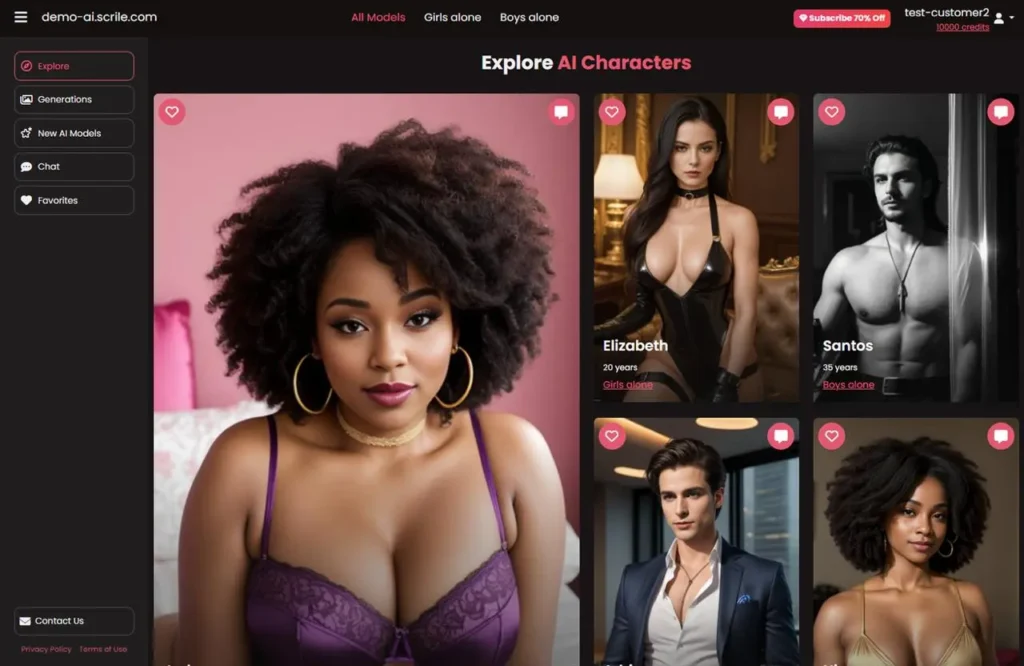
For those who think of developing a virtual avatar seriously, Scrile AI is revolutionary and unique in the industry. It takes the entire process of creating, launching, and managing an AI influencer and makes it easy even if this is your first time trying AI technology.
With Scrile AI you can create an AI influencer from scratch. The platform will walk you through the development and design of the persona, visual generation, content scheduling, and audience engagement. Instead of piecing together a variety of software to do each part of the process, you’ll have an all-in-one option that saves time and produces professional results.
Key Benefits of Scrile AI
- Quick & easy creation of personas.
- Integrated content management.
- Analytics & optimization.
- Cross-platform publishing.
- Easy to use.
Start building your AI influencer today with Scrile AI. Bring your virtual persona to life, grow a loyal audience, and explore new opportunities in the digital marketing space.
FAQ: How to Make an AI Influencer

How much do AI influencers make?
AI influencers are proving to have a surprisingly lucrative return on investment. Some earn upwards of $10,000/month. Income sources can diversely include brand partnerships, paid posts, affiliate sales, digital products, and different types of NFTs.
The biggest benefit? AI influencers don’t need sleep, vacation time, or breaks, so they can put out tons of content 24/7 and be active all the time. Tools such as Scrile AI allow you to automate content creation, scheduling, and analytics. This allows your virtual influencer to engage and earn, even if there’s no actual human presence on their front.
Is it legal to make an AI influencer?
You can legally create an AI influencer, but it comes with policies to consider. First thing, you really must ensure transparency. Your audience must know they are interacting with a digital personality. If you trick your followers or audience into thinking an AI influencer is a real, live person, you could definitely face serious legal issues, including the FTC endorsement guidelines.
When you create an AI influencer, always disclose any partnerships or sponsorships clearly. Scrile AI is a platform designed to assist in managing posts and provide reminders regarding disclosures, which help run a compliant and effective marketing campaign. Ethical use of AI can protect your brand and establish trust with your audience.
Is it worth creating an AI influencer?
Definitely. Creating an AI influencer in 2025 will be a strategic, revenue-generating decision for marketers, content creators, and business builders. AI avatars make it easy to create a brand, connect with followers, and find sponsorships, while keeping you from being on camera and spending countless hours of time.
With Scrile AI and other platforms, the entire process will be streamlined in one place with AI tools to create a persona, create content, schedule posts, and manage engagement. To summarize, if you are looking for the intersection of creativity, scalability, and monetization, then it is wise to think about opportunities for AI influencers. This is a unique opportunity to get ahead of the competition in the digital marketing space, maximizing the important elements of efficiency and reach.
